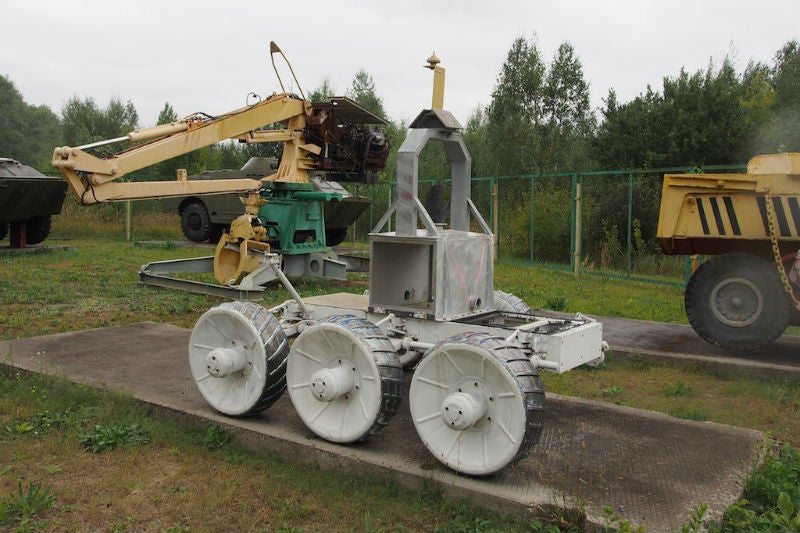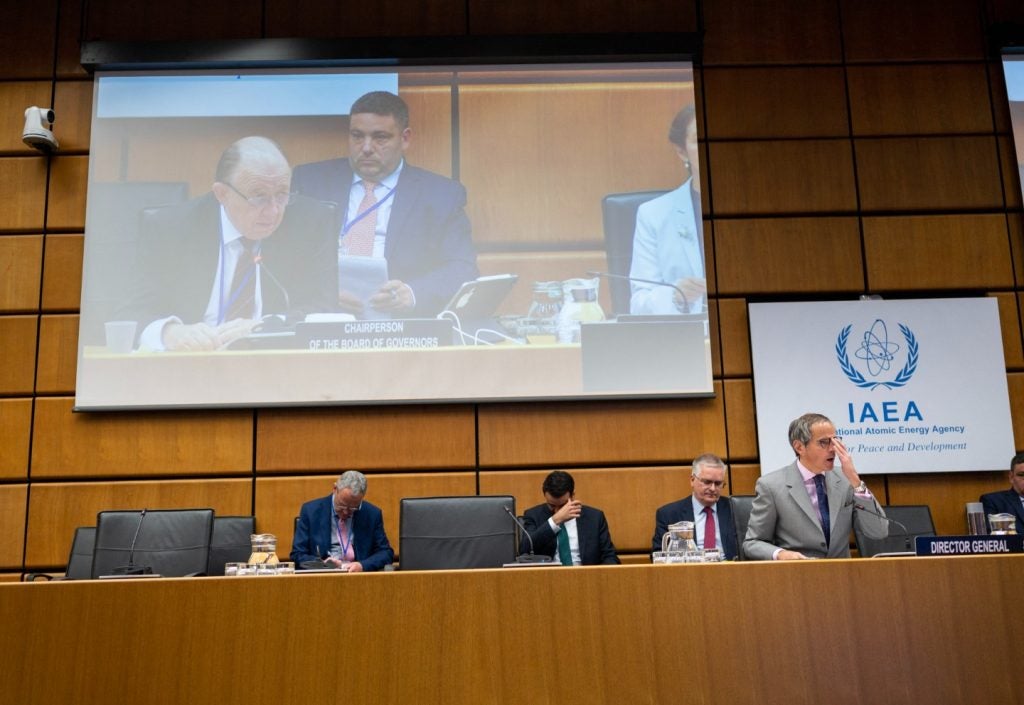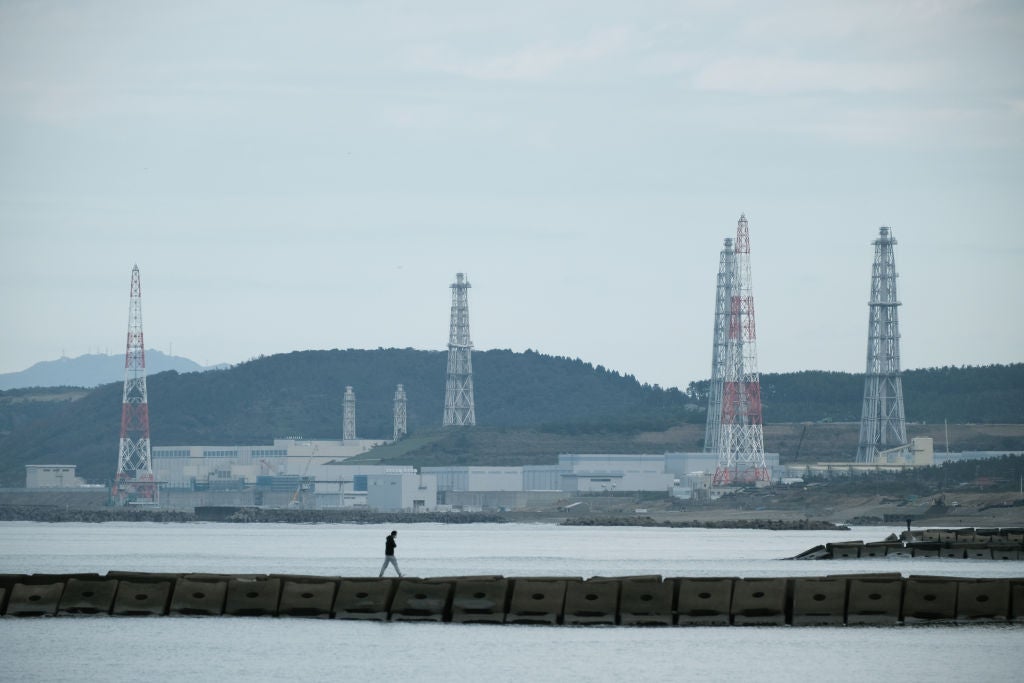
Cleaning up nuclear waste is one of the key drivers for the development of robotics technology. Since the Three Mile Island nuclear disaster in 1979, automated robots have been designed to get right into the action, conducting test and inspection works, as well as decommissioning tasks that are considered too dangerous for humans.
Dr Antonio Espingardeiro, Institute of Electrical and Electronics Engineers (IEEE) member and member of IEEE Robotics and Automation Society, says: “Robots have been used in nuclear facilities for a long time. Scenarios such as maintenance tasks in nuclear facilities or even disasters like radioactive leaks or search and rescue operations have proven to be quite successful. We are talking about robotic arms or remote operated vehicles with some end effectors built in to handle dangerous situations.”
From Soviet-designed automated robots used in the aftermath of Chernobyl, to robotics-inspired nuclear hazard suits resembling the superhero Iron Man, we take a look at how robotics has developed to assist cleaning up nuclear waste in the industry.
1979: Three Mile Island and early robotics designs
The Three Mile Island Unit 2 (TMI-2) nuclear meltdown in the US in 1979 may not have been as disastrous as later nuclear incidents due to the containment building largely remaining intact.
In response to the meltdown, the Bechtel engineering team in charge of cleaning up nuclear waste joined forces with robotics professor William ‘Red’ Whittaker from the University of Carnegie Mellon (CMU). Red’s team spent six months designing robots specifically for TMI-2.
The first of these, the Rover, was a six-wheeler robot equipped with lights, cameras and an electronic tether acting as a power supply. Able to could export images and video back to the operating crew, it was primarily a remote reconnaissance vehicle (RRV), taking the first photographs of TMI-2’s basement.
How well do you really know your competitors?
Access the most comprehensive Company Profiles on the market, powered by GlobalData. Save hours of research. Gain competitive edge.

Thank you!
Your download email will arrive shortly
Not ready to buy yet? Download a free sample
We are confident about the unique quality of our Company Profiles. However, we want you to make the most beneficial decision for your business, so we offer a free sample that you can download by submitting the below form
By GlobalDataThe Rover was soon equipped with extra tools, allowing it to perform clean-up tasks and acquire samples by sucking up radioactive sludge through a vacuum. Unfortunately for the Rover, it experienced too much radioactive exposure during its career and to this day remains offline, trapped in the basement.
Red and his team at CMU also developed two other robots, including the Core Sampler, a variation on the Rover that used automatic drills to test radiation inside TMI-2’s walls; but ultimately it was not risked inside the basement due to the fate of the Rover.
Red said in a CMU news release: “One of these robots [Rover] performed incredible, extensive and long work in the basement clean-up. The plan for the other was to not send it into hot radiation so that it would be guaranteed to remain clean for training, analysing, tool-building, technique development…. The basement was a four-year clean-up campaign, so that was a lot of work.”
A third robot, the Workhorse, described as ‘Swiss army knife on steroids’ by Red’s colleague John Bares, was created, but never entered TMI-2 as it was considerably more expensive and complicated to operate.
1986: Chernobyl’s robot trouble
During the Chernobyl nuclear incident, the Soviet authorities in charge of cleaning up nuclear waste developed around 60 unique remote-controlled robots to spare human workers from radioactive exposure. The total cost of the clean-up operation was $2bn.
Designs included the STR-1 robot, which resembles a moon buggy. It was placed on the roof of the nuclear plant and used to clean up parts of the destroyed reactor. Another design for the purpose of debris cleaning was the Mobot, developed by Moscow State University. It was a smaller version of a loader used in construction, with a front-end bucket used to scoop up debris.
Other robots included the Komatsu D-355W, an amphibious bulldozer that had no problem operating at the bottom of the sea, but inevitably could not withstand the extreme level of radiation of up to 10,000 roentgens per hour, and quickly broke.
Similarly, the German-manufactured MF-2 and MF-3 robots, which ran on wheel tracks and were mounted with robotic arms, also failed.
The Soviet official in charge of decontamination at Chernobyl, Yuri Semiolenko, told a CMU robotics conference in 1990: “The challenge was to clear 100t of highly radioactive debris from the roof. Unfortunately, we were not able to decontaminate the roof without using mostly manual labour.”
The problem was that cleaning up nuclear waste required more skills than the robots could provide, eventually resulting in the authorities sending in soldiers to perform most of the decontamination works. Radiation was so high that each worker could only spend 40 seconds inside or near the facility; 31 died from exposure, while 237 suffered from acute radiation sickness.
2008: Cleaning up nuclear waste at Hanford Nuclear Reservation
Hanford Nuclear Reservation in the US has been somewhat of a hub for nuclear waste innovation. This is because scientists, and their robot friends, are faced with the task of emptying nuclear and chemical waste tanks the size of around 150 basketball courts before the waste reaches the Columbia River. Exposure to the material would kill a human instantly.
Luckily, Hanford has developed a few automated machines that are specifically designed for different parts of the job. Take Foldtrack, for example, which can access the tanks through one-foot-wide pipes in the roof by splitting into a string of pieces, and then rebuilding itself like a Transformer once inside. The remote-controlled robot uses a 3,000psi water cannon to blast nuclear sludge off the walls of the tank and pump it out. Upon completion, scientists are forced to leave the $500,000 robot in the tank due to the high levels of contamination.
Another robot, the Salt Mantis, looks like a fire hose on wheels. However, it comes packed with power, with the ability to blast tough toxic salts that build up in waste tanks with its 35,000psi water cannon. For comparison, a regular firehose has around 300psi of pressure. In order to support the huge power, the orifice of the hose is made of gems, such as sapphires, which can withstand the pressure.
Nicknamed the Possum, the Off-riser Sampling System robot’s function is to go deep into waste tanks and scoop up samplings with its front-end mechanical blade for engineers to see how much radioactive waste is left inside via a camera.
Finally, the Tandem Synthetic Aperture Focusing Technique, or Tank Crawler, locates cracks or corrosion in Hanford’s waste storage tanks using ultrasonic and electrical conductivity sensors.
2011: Fukushima and the Little Sunfish amphibi-bot
It took six years after the Fukushima nuclear disaster of 2011 for robots to capture the first images of the meltdown, seemingly melted fuel from one of the reactors. Capturing images of exactly what happened is crucial for decontamination crews in cleaning up nuclear waste, which is expected to take 40 years and cost $188bn, according to 2016 estimates.
Previously designed robots failed to visually inspect the reactor, either breaking due to high radiation or by getting stuck in the confined spaces. That was until Toshiba’s senior scientist in its technology division, Kenji Matsuzaki, developed the Little Sunfish – an amphibious bread loaf-sized robot that could slip into the 5.5-inch reactor pipelines.
Tokyo-based International Research Institute for Nuclear Decommissioning (IRID) helped Toshiba in the development of Little Sunfish.
A Toshiba representative said in a news release: “Working with IRID, we succeeded in developing a small robot with high-level radiation resistance and through its deployment we expect to get information that will support the advance of decommissioning. It will deliver a video feed that will clarify damage to the PCV interior and information on how best to retrieve fuel debris.”
At first, the robot found no spent fuel in either reactor 1 or 2. Then, a breakthrough. Poking through the rubble, Little Sunfish managed to find stalactites resembling spent fuel in reactor 3 and sent back 15 hours of video recording.
The findings are both limited and uncertain, but they have helped the team to progress its efforts, and engineers are now developing the next generation of robots that can go in and remove the melted fuel.
Early stage ideas include scooping up the majority of fuel with a 20-foot robot arm, or rolling out two robots working in tandem and equipped with cutting and grappling tools to remove and seal the contaminated debris. However, either could take years to develop. Tepco has set a target to start cleaning up the fuel in reactor 3 alone by 2021, highlighting the significant efforts needed for this clean-up from both man and machine.
2017: Sellafield calls on the power of Cthulhu
In the Sellafield nuclear site in the UK, scientists have been working on methods to clean up the vast amounts of nuclear sludge from its First-Generation Magnox Storage Pond, as part of decommissioning efforts said to cost around £1.9bn each year. The size of two Olympic swimming pools, the storage pond contains large amounts of nuclear sludge from decaying fuel rods stored below the surface.
While robots have been designed to reach the depths of the pond and remove nuclear waste, none proved to be very successful, until Cthulhu – Collaborative Technology Hardened for Underwater and Littoral Hazardous Environment.
QinetiQ project lead Bob Hicks told Wired: “Rather than trying to mimic a human, we’re building a robot that can do things humans can’t do with senses that humans don’t have.”
Cthulhu is a tracked robot that can move along the bottom of the storage pond, using whisker-like sensors and sonar to identify and retrieve the nuclear rods.
While still currently under development, Cthulhu will use deep learning to combine tactile sensors with sonar technology, to get an unprecedented view of the underwater environment. It will be able to identify the type of fuel rod, whether it is still intact, and dispose of it while avoiding obstacles.
Cthulhu is a collaborative project, with military robotics company QinetiQ supplying the tracked body, Bristol Maritime Robotics building the tactile sensors, and Lancaster University developing the neural network artificial intelligence.
Lancaster University professor at the School of Computing and Communications Plamen Angelov told Wired: “Much like a walrus detecting molluscs, we hope to be able to detect and identify objects in the sludge with the whiskers.”
Due to Cthulhu’s military-grade design, the robot could be cleaned and reused, but this has not been confirmed and Cthulhu will remain on site for the time being.
2018: Iron Man and the rise of the bio-robots
The South West Nuclear Hub at the University of Bristol in the UK is collaborating with Sellafield to develop a nuclear waste robotic suit for humans, taking inspiration from the comic book hero Iron Man.
South West Nuclear Hub co-director and project lead Professor Tom Scott says: “A wearable robotic suit, involving a powered exoskeleton combined with composite materials for body armour, offers the possibility of numerous safety and performance improvements for decommissioning workers who have to do ‘hands on’ work in nuclear plant areas.”
The suit is a considerable improvement on current PVC suits worn by nuclear workers for cleaning up nuclear waste, and has the ability to give the wearer super-human strength, while keeping their body cooler.
“Compared to the current situation of workers wearing PVC suits, an exoskeleton could help reduce heat stress on workers bodies and therefore allow them to be more productive by working for longer periods of time or to lift objects which would otherwise be too heavy,” says Scott.
“Composite materials could provide better shielding of radiation for workers and to be easier to decontaminate when the workers leave the plant area.”
The suit will also be equipped with other technologies such as eye-tracking to monitor worker fatigue and a hand attachment to help improve detection of nuclear radiation.
“Additional technologies such as wrist-mounted gamma spectrometry and Raman spectroscopy could enable better detection of radiation and radioactive contamination, therefore allowing more intelligent decisions about accessing the workface,” adds Scott.
The project leaders have stated they are hoping to develop a fully working prototype of the Iron Man suit after it has been reviewed next year. Turning human workers into ‘bio-robots’ could be the next step for robotics in this field.
Combining robots and human workers may be necessary for cleaning up nuclear waste and getting such immense nuclear decontamination operations over the line.






